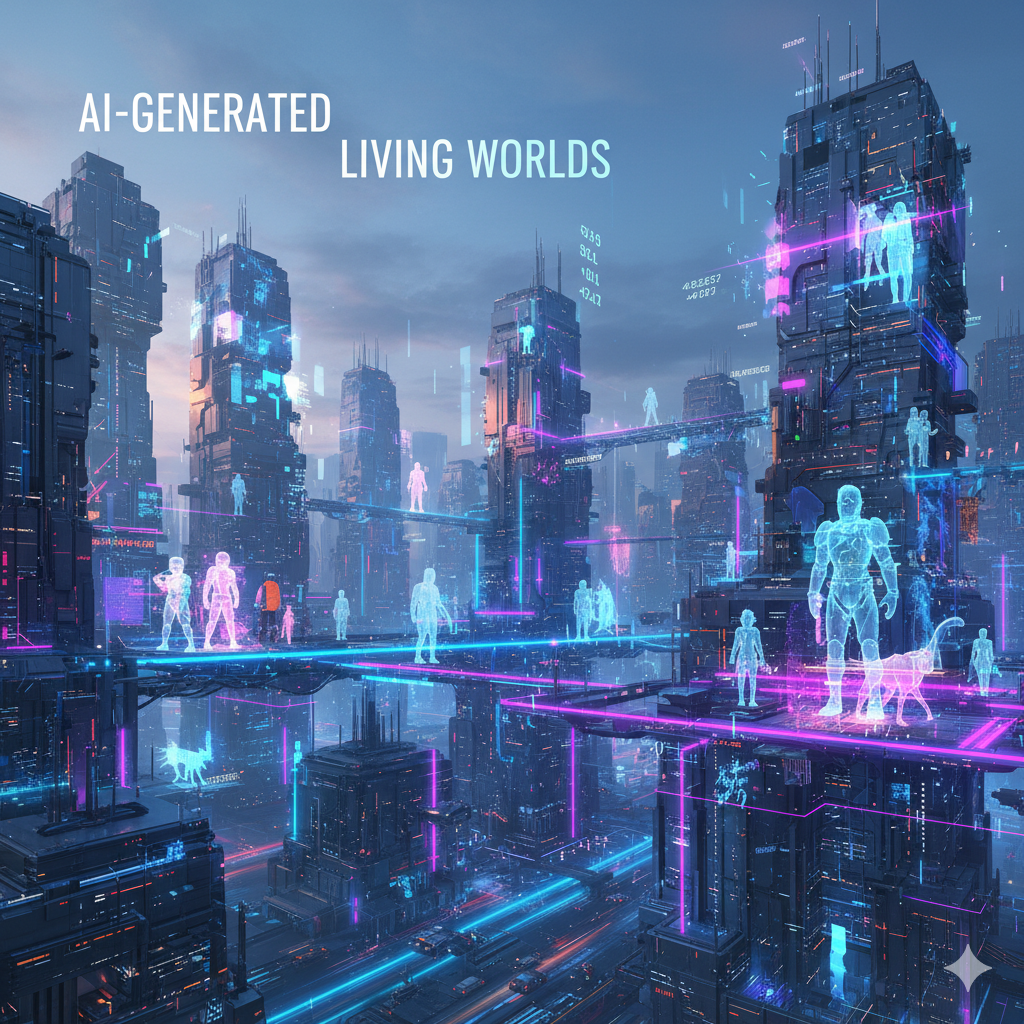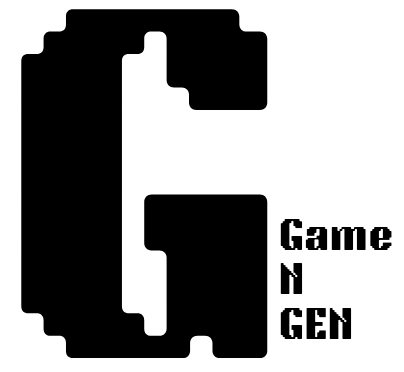Introduction: Why Living Games Are the Future
For decades, video games have mostly been static. Once a developer created a map, character, or quest, it stayed the same for every player. While this works for many games, it limits creativity and replay value.
Now, with generative AI, we can move from static design to living, dynamic game worlds. These are games where characters evolve, quests change, and environments adapt to how you play. Every session feels new.

For developers, this is not just a cool trend—it’s a chance to redefine engagement and build games that last longer, attract more players, and even reduce manual content costs.
Static vs. Dynamic Content in Games
Static Content (Traditional Design)
- Created manually by developers
- Same experience for every player
- Example: In a static RPG, the shopkeeper always says the same line, no matter how many times you visit
Dynamic Content (AI / Procedural Generation)
- Generated by AI or algorithms
- Personalized, adaptive, and unpredictable
- Example: A shopkeeper who remembers your past trades, adjusts prices, and talks differently depending on your game choices
👉 For developers, this means less repetitive design work and more unique player experiences.
Why Generative AI is a Game-Changer
Generative AI can create assets, worlds, dialogues, quests, and even full ecosystems without needing a developer to manually design every detail.
Here’s why it matters for developers in 2025:
- Speed: Faster content creation saves months of work
- Cost: Reduces the size of large content teams
- Replayability: Games last longer, players return more
- Personalization: Each player feels like the world was built just for them
- Scalability: Indie teams can now create experiences once possible only for AAA studios
Key Tools and Models Developers Use
1. Diffusion Models
- Used to generate textures, landscapes, props
- Example: Stable Diffusion creating unique skies or terrain patterns
2. Large Language Models (LLMs)
- GPT, Claude, Gemini → Create NPC dialogue, lore, and quests
- Example: NPCs that talk naturally and change responses based on player history
3. World Models
- Predict how environments evolve (Dreamer, MuZero, Gato)
- Example: AI-generated weather cycles or ecosystems
4. Procedural Generation Tools
- Perlin Noise, Houdini, Gaia → Used with AI to build cities, forests, dungeons
- Example: Auto-generated villages that still look handcrafted
👉 Combining these tools helps developers move beyond “randomness” into controlled creativity.
How to Integrate Generative AI Into a Game
A typical AI-powered game loop looks like this:
- Player Input: Game records what the player does
- AI Processing: Generative AI models create new dialogue, quests, or assets
- Validation: Rule-based system checks for consistency
- Output: New world elements are added in real time
This approach ensures AI-driven content feels believable, balanced, and immersive.

Real-Life Examples
🎮 Fortnite (Epic Games – USA)
- Uses C++ and procedural systems for live events
- Dynamic world updates keep millions of players engaged
🎮 AI Dungeon (US Startup)
- A fully AI-driven text RPG using GPT models
- Players can type anything, and the AI builds a custom story
🎮 Ubisoft Prototypes
- Ubisoft has tested AI NPCs that remember player actions and respond with context-aware dialogue
🎮 Minecraft Mods (Community Driven)
- Developers in the US added GPT-powered NPCs that generate new quests dynamically
These examples show how developers are already mixing AI + rules to create more natural, living experiences.
Challenges Developers Face
Even with powerful AI, building dynamic worlds is not easy. Developers must solve:
- Consistency: NPCs must not contradict themselves
- Performance: Real-time AI can cause lag and high server costs
- Control: Too much freedom = broken storylines
- Player Trust: AI must avoid bias, offensive outputs, or nonsense
- Cost: Cloud AI models are expensive to run at scale
👉 The solution? A hybrid approach → AI for creativity, rules for control.
Best Practices for Developers
If you’re planning to add generative AI to your game pipeline, follow these steps:
- Start Small – Use AI for NPC chatter, side quests, or visual details first
- Set Boundaries – Combine AI with rules to avoid nonsense or lore-breaking content
- Cache Results – Save generated content to reuse instead of regenerating every time
- Keep Human Oversight – AI helps, but designers still guide the creative vision
- Test With Players – Early feedback prevents frustration with AI randomness
When NOT to Use Generative AI
Sometimes AI is not the best fit. Avoid it if:
- Your game has a tight cinematic story
- Your budget is too small to handle cloud costs
- Your design requires competitive fairness (AI unpredictability can break balance)
For these, static design is better.
Future Outlook: What Games May Look Like in 2030
By 2030, generative AI could mean:
- NPCs with real memories and evolving personalities
- Cities that grow and change across player sessions
- Quests that adapt to your history, choices, and playstyle
- Games where no two players ever share the same world
This is the vision of living games—where developers provide the framework, and AI fills it with endless, evolving stories.

1. Player Agency in AI-Generated Worlds
One of the most exciting aspects of generative AI is player-driven storytelling. Unlike static games where outcomes are fixed, dynamic AI worlds let players shape the narrative with every decision. For example, if a player allies with one faction, the AI may generate new enemies, quests, or even future political conflicts. This creates emergent gameplay—where unique stories unfold naturally instead of being scripted. Developers can use this to keep players engaged for years, as no two adventures feel the same.
🔹 2. Multiplayer and Shared Living Worlds
Generative AI is not limited to single-player games. In multiplayer titles, AI can make worlds adaptive to entire communities. Imagine an MMORPG where a city grows in response to collective player actions, or where quests shift based on global events. The challenge here is synchronization—developers must ensure that AI-driven changes remain consistent for all players. But if done right, this creates living shared experiences that evolve just like real societies, making multiplayer worlds deeper and more engaging.
🔹 3. Balancing Randomness and Design
Too much randomness can break immersion. If every NPC acts unpredictably, the world might feel chaotic instead of alive. That’s why the best generative AI design uses a balance: controlled randomness with designer oversight. Developers can set rules (like cultural values, history, or physics laws) that guide AI creativity. For example, an AI-generated quest might vary in dialogue, but always align with the main storyline. This balance ensures that worlds feel dynamic yet consistent with the game’s vision.
🔹 4. Monetization and Business Opportunities
Dynamic AI-driven games also open new business models. Since content can evolve endlessly, developers can keep players engaged longer, which improves retention and revenue. Instead of paying for static DLCs, players may subscribe to living worlds that constantly update with AI-driven content. This model is already visible in “live service games” but with AI, the cost of producing fresh content drops significantly. For studios, this means higher ROI with lower content costs, making AI integration a smart long-term investment.
🔹 5. Ethical and Social Considerations
Generative AI also raises questions about ethics and safety. What if an AI-generated NPC says something offensive? What if AI creates unfair quests that punish players? Developers must build guardrails and moderation systems to filter harmful or biased outputs. Another ethical issue is transparency: should players know when a character is AI-driven? Handling these challenges carefully ensures that AI adds to the experience without creating risks. As AI worlds grow, ethical design will become as important as technical performance.
What is a living game?
A living game is one where AI generates changing environments, NPCs, and quests, so the experience feels alive.
Can small studios use generative AI?
Yes. Indie developers can use LLMs and procedural tools to scale content without huge budgets.
Will AI replace human developers?
No. AI will act as a co-creator. Human oversight is needed for vision and polish.
What engines support AI integration?
Both Unreal Engine and Unity already allow AI model integration with plugins and APIs.
What’s the biggest risk?
Performance cost and inconsistent outputs. Balance AI with rules for stability.
